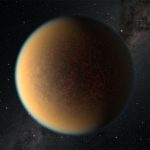NASA’s Curiosity rover uncovers clues about how Mars became uninhabitable
NASA’s Curiosity rover has been exploring the Gale crater on Mars, uncovering new information about how the Red Planet went from being a place...
Astronomers observe ‘inside-out’ growth of early galaxy
Astronomers have made a groundbreaking discovery with the NASA/ESA James Webb Space Telescope (JWST) by observing a galaxy from 700 million years after the...
This distant planet may host volcanic moon similar to Jupiter’s Io
New research from NASA’s Jet Propulsion Laboratory suggests there may be a volcanic moon orbiting a planet 635 light-years from Earth.
This potential exomoon, similar...
Asteroid mining is a trillion-dollar space opportunity, shows study
A new opportunity for the future of space exploration and industry has emerged: asteroid mining.
While astronomers recently discovered a 33-foot-long asteroid called 2024 PT5,...
A black hole has destroyed a star, and used the wreckage to pummel another...
When a supermassive black hole consumes a star, it doesn’t just swallow it whole. It shreds the star, ripping it apart bit by bit...
How did Mars become uninhabitable
Mars has captured our imagination for centuries.
Ever since the invention of the telescope our imagination has often drifted toward the possibility of life on...
A new way to detect rocky exoplanet atmospheres
The total number of exoplanets discovered to date totals 5,288. Among them are a host of rocky, Earth-like exoplanets but none of them seem...
Why red dwarfs form massive planets
In recent years, the number of known extrasolar planets (aka. exoplanets) has grown exponentially.
To date, 5,799 exoplanets have been confirmed in 4,310 star systems,...
TESS finds a triple star system that could fit within Mercury’s orbit
TESS, the Transiting Exoplanet Survey Satellite has been on the lookout for alien worlds since 2018.
It has just hit the news again having identified...
Astronomers discover dozens of fast-moving stars ejected from a young star cluster
Astronomers have made an exciting discovery: 55 fast-moving stars that were thrown out of a young star cluster called R136.
This star cluster is located...










